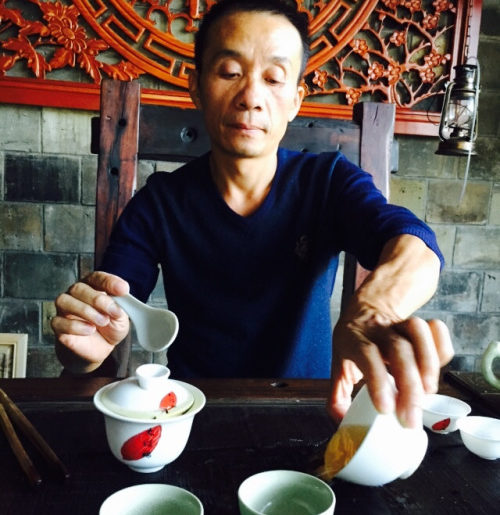Green tea is like a salad, a fresh fruit, a meadow of spring flowers, or a blade of grass. It is a representation of health, energy, optimism, youth, and sunshine. Green tea is so much about seasonality; remember, no one likes wilted lettuce, droopy flowers, or week-old bread. Every month past a green tea’s production date it loses more and more flavor. Vibrant green teas in the peak spring months of April and May taste like a revelation, while past due green teas are flavorless at best. Most of the asparagus-like sweetness and spring clover fragrances will have been a memory by December. A green tea’s nutrients and vitamins are also the most potent at its peak freshness. Most green teas on the market are not fresh. In fact, there is no harvest or production information, nor expiration dates for many of the name-brand green teas commonly found in supermarkets.…
How to make tea the right way: A step by step process
Tea making is an art, and the more one masters the basic fundamentals of technique, the more one can free flow and adapt. Of course, we are referring to the art of steeping whole leaf, preferably artisan made teas. Incidentally, water, equipment, and serving vessels are all important supporting characters to the actual tea ingredient itself. Choose the tea you want to steep by its quality first, then seasonality second. High quality leaves will stand up to storage and time much better than tea dust and fannings, which are usually, not fresh. Once you have chosen the tea you wish to steep, prepare the following: Water: Choose spring waters, or carbon-filtered water. Higher mineral waters are usually preferred. Temperature: Heat up the water to the right temperature for the appropriate tea. The temperature range for most green teas are between 150-170 F, for White teas between 170-180 F, Oolongs from…
Artisan Tea Producer: Mr. Zhang of Wuyi Mountain, China
So many of the artisans that we buy teas from are unique and deserve the utmost attention and respect. It’s difficult to choose just one to highlight. Mr. Zhang, of Wuyi Mountain, China, however, would definitely be the first. Wuyi ‘Rock’ teas were often State gifts from the Central Chinese government to other dignitaries, such as the President of the United States. As a result, the requirements of being an acknowledged artisan in a fabled tea producing region is quite high. Wuyi Mountain is a legendary scenic area of some of the most pristine waters and cliffs, with a unique terroir that commands some extreme requisites for growth. Mr. Zhang has tackled the job of mastering what is traditional farming and processing techniques. He has also created personalized equipment to make exceptional versions of Wuyi teas. Wuyi teas are arbor type Camellia Shuixian varietals that grow on just 10cm of soil, and…
In Kyoto, Japan, home of the samurai and the best artisan crafts….

In Kyoto, Japan, home of the samurai and the best artisan crafts. These guys in the tour are out of control, they are having way too much fun. I had these deep intentions of setting the tone and showcasing the culture and food that makes the tea special. Zen and the art of living! Everything was special to these guys- the custard tofu! The lacquer ware! The artful displays! The stunning gardens and temples! And yes, now they understand how the tea fits in, in the world of aesthetic, gourmet, everyday down to earth food. But, the repercussions have just began. Various group members are discussing not going back to the U.S. And some are just angry that the food in the U.S. are just too far away from good. Even the 7-elevens are have awesome rice balls, against what, Doritos in the U.S.? It’s a wonder how great living standards can be when you are not wasting money on Drones and Missiles…. Make rice balls, not bombs?



